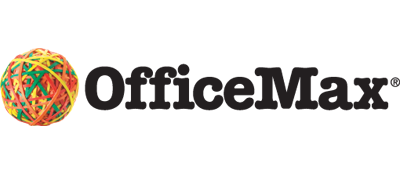Recently, OfficeMax Inc (NYSE:OMX) and Office Depot Inc (NYSE:ODP) announced a $1 billion merger in an effort to consolidate businesses in a struggling industry. Let me get straight to the point: This was a merger for survival … period. Does anyone remember Hewlett Packard buying Compaq? It’s eerily similar, with two inferior competitors banding together out of desperation. I was actually expecting one or both to eventually go under (i.e. Circuit City,) but the merger is just a painful deferment of the inevitable. Consolidation in a stagnant industry benefits the market share leader: Staples, Inc. (NASDAQ:SPLS).

In my opinion, Staples was an attractive investment opportunity prior to the announcement, but the merger announcement only strengthens my conviction. Staples is a misunderstood story, which generally leads to attractive valuations. The pain of integrating two established (and weaker) franchises will only create more opportunity for the company to add to their market share lead. Integration of disparate store bases and corporate systems is a very difficult task, even for market leaders (which they clearly are not.)
Let me first begin by addressing the most common bear case arguments against Staples, which are as follows;
1. The office supply industry is in secular decline.
2. Amazon.com, Inc. (NASDAQ:AMZN) with steal market share and ultimately destroy the competition within the industry similar to books and consumer electronics.
3. Staples is a value trap.
A struggling industry:
First, there is no question that the industry has faced some serious headwinds. The industry has struggled to grow over the past 5 years – while this is true, it hasn’t shrunk dramatically either. Of the combined $42 billion in sales for these three competitors, Staples is by far and away the market share leader generating more revenue than OfficeMax Inc (NYSE:OMX) and Office Depot Inc (NYSE:ODP) combined. According to IBIS World, Staples controls 35% of the office supply market. Much like the rest of retail, office supplies was over-stored with too much excess capacity. The merger will help to address this problem (estimating closing 600 stores.) Furthermore, Staples has embarked on their own effort to shutter unprofitable stores reducing the the glut of locations. As for industry dynamics, one factor to consider is the pricing environment. Is it commodity-like and is it irrational? I don’t believe that’s the case in this situation. While office electronics and other hardware is indeed a commodity, this represents a smaller portion of the overall mix. Pricing on copy paper, for example, is quite firm and favorable.
Secondly, the Amazon threat:
I don’t believe that Amazon is as much of a threat as is commonly perceived. Bulls on Amazon seem to be under the delusion that the company can simply enter any market without regard of profits. This strategy cannot sustain itself. I will definitely admit Amazon has done a tremendous job at disrupting incumbent players in many categories, executing on pricing and great service. However, this formula doesn’t work in every market. In my opinion, Amazon bulls are incorrectly extrapolating their past success with books and consumer electronics (and other categories) to office supplies. A large part of Staples mix is contracts with the corporate and government market. While pricing is important, reliability and service are primary drivers to the large scale office supply business. Staples continues to defended this territory well.
Furthermore, Staples is a formidable player in its online delievery business in its own right with over $1billion in revenue and growing significantly.

